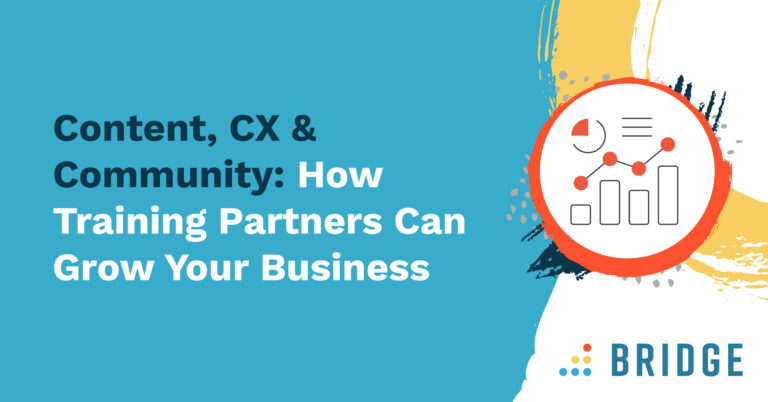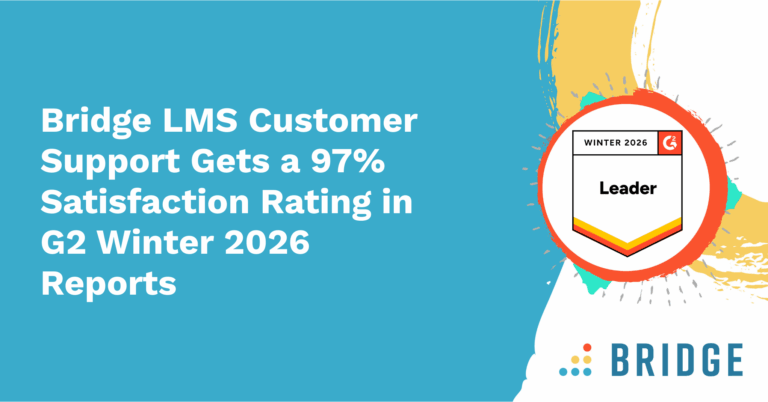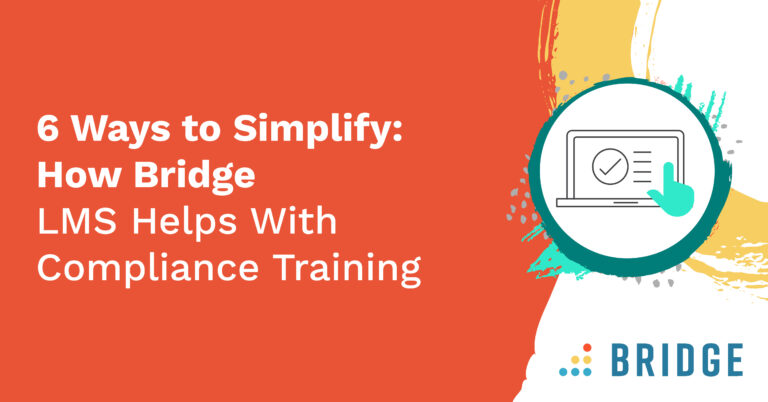The world is only becoming more connected. Growing your business in isolation is hard, but partnering with other companies can help you reach new heights. From reselling to co-branding, a partnership can be a powerful growth engine that boosts your brand awareness and expands your customer base. If you want to take advantage of all the benefits of collaborating with another business, you’ll need to create an environment that empowers your partners to do their best work.
A well-developed strategy paired with an extended enterprise LMS will set you up for success. Read on to see three ways you can help your partners thrive, so your business can grow.
MORE FROM THE BRIDGE BLOG | ‘7 Steps to External Learner Training Success’
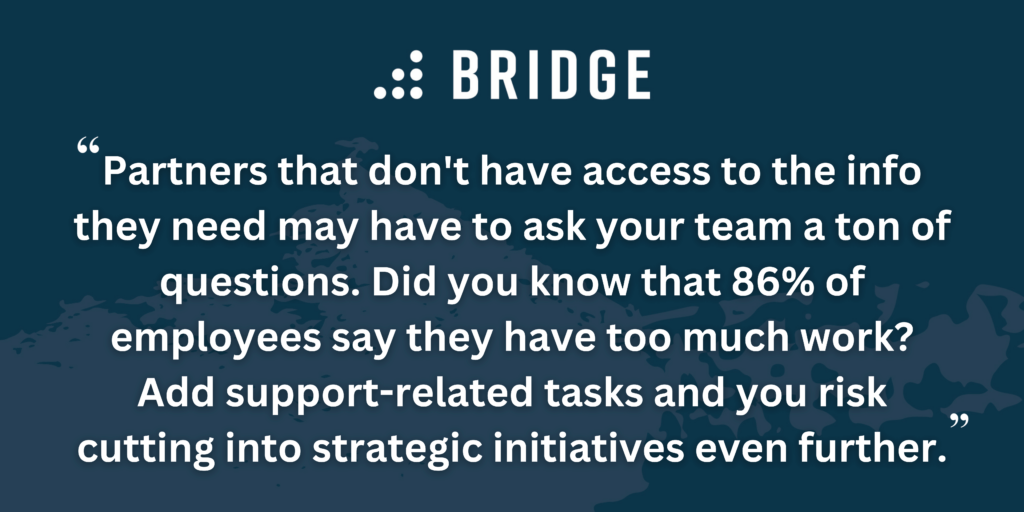
1) Content: Access to Information Helps Partners Be Self-Sufficient
When you know your business like the back of your hand, it can be hard to imagine what things look like for anyone coming in fresh. If you don't take the time to help new partners understand the ins and outs of your organization, however, you’ll make more work for yourself over the long term.
Partners that don't have access to the info they need when they need it can't fulfill their function properly. They may have to ask your team a ton of questions or continually request support, which can significantly increase your admin burden over time. Did you know that 86% of employees say they have too much work? Add support-related tasks to the mix and you risk further cutting into strategic initiatives.
A lack of information can also harm business outcomes. We simply don’t know what we don’t know. Without thorough onboarding and continued training, your partners will have no way of foreseeing challenges that may seem obvious to you.
Partners need transparency and predictability. This is why it’s a good idea to create a centralized hub containing everything they need to know. Instead of siloing critically important data in disparate emails, chats, or folders, give both you and your partners a global view of key info in a single, organized space. Using an LMS specifically designed for corporate training is a great option. These platforms make it easy to keep materials organized from your end while providing your partners with a simple, intuitive experience on a user-friendly platform.
What Kind of Content Should Be on Your Partner Hub?
i) Onboarding Materials
Cover the basics like the tasks you'd like your partners to fulfill and state what you’ll do in return. Introduce your partners to the teams they’ll be working with. Help them understand what your business goals are and how they can help you reach them.
ii) Rules of Engagement
Even when you have a healthy, good-faith relationship with your partners, making the rules explicit can help you keep everyone on the same page. Share guidelines on how you’d like to conduct business, stating the terms of your agreement clearly and letting them know what you expect in return.
iii) Continuous Learning
Partner enablement shouldn't stop after onboarding. Your business changes over time, so your partner relationships will need to change too. When you keep a learning library of current modules on your hub, your partners will always have up-to-date info to refer to as and when they need to. Bridge training software is a great option for continuous learning. It’s a SCORM-compatible platform with a clean, simple user interface—for both admins and users.
READ MORE ON ELEARNING | ‘10 Facts & Stats About Learning Retention You’ll Want to Remember’
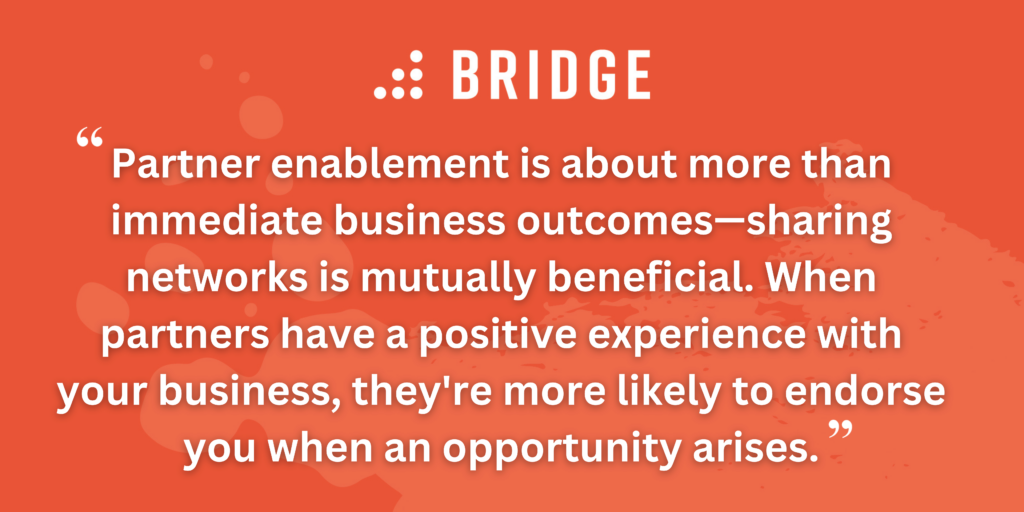
2) CX: Treating Partners Like Customers Can Boost Your Brand Awareness
A partnership is about more than the exchange of goods and services. A good partnership is just as valuable as a good reputation. As Forbes puts it, “Partners are able to use their own extensive networks to expand the market reach of a brand’s products or services.”
Partner enablement is about more than immediate business outcomes—sharing networks is mutually beneficial. When partners have a positive experience with your business, they're more likely to endorse you when an opportunity arises. They may even be open to shared marketing and PR campaigns, or joint product ventures.
Failing to give your partners a good experience means missing out on opportunities to expand. You may want to think of them as clients—even when they aren’t—and continuously ask yourself how you can help them feel comfortable and empowered.
How Can You Ensure Your Partners Have a Good Experience?
i) Make Learning Easy
If you let your partners learn in ways that suit them, they're more likely to enjoy the experience. Consider an LMS that offers platform integration so you can offer a variety of content, like interactive digital courses, webinars, videos, and podcasts. Supporting mobile learning is also a must in the age of hybrid working.
ii) Personalize Their Learning
One-size-fits-all isn't the best approach when it comes to educating your collaborators. Innovation partners aren't interested in the same things as vendors, for example. Make sure the content on your partner hub is relevant to the person looking at it. Your choice of LMS can make or break personalization efforts. Bridge is a great option as it allows you to create unlimited sub-accounts, so segmenting content is a breeze. Each account can even have distinct admins, tracking, single sign-ons, and branding.
iii) Reward Them for Their Efforts
Enabling your partners isn't just good for your business—it can also be great for their employee development. Why not offer certificates when learners complete a module? This will help them progress toward their career goals. There's a hidden benefit too: Learners may share their certificates with their networks, which is fantastic for your brand awareness.
RELATED READING TO DOWNLOAD TODAY | ‘4 Ways to Get Your Teams to Make Time for Learning’
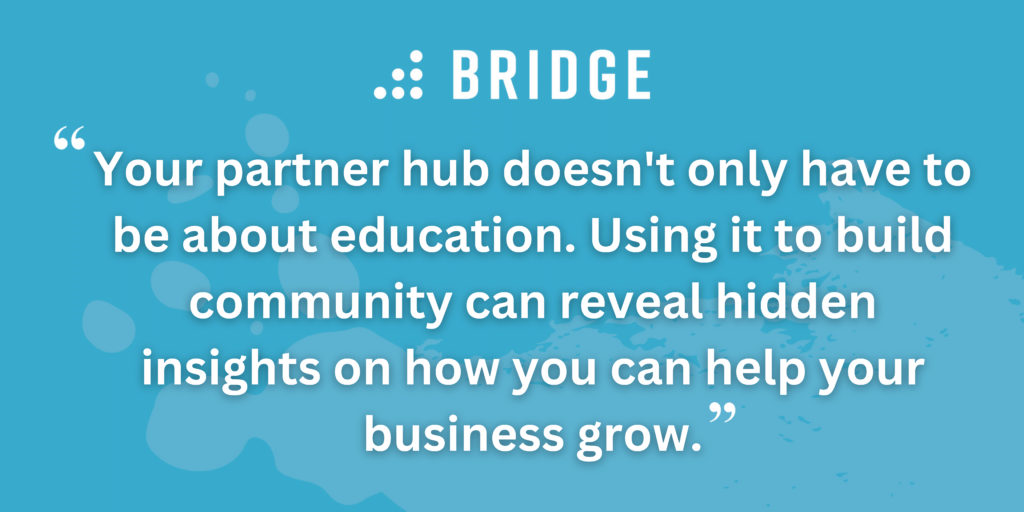
3) Community: Building Strong Relationships Makes Business Sense
A good partner enablement strategy often has the unexpected side effect of empowering your own organization's employees. According to Forbes, partnerships can result in successful outcomes that grow your business, even if company growth wasn’t a direct goal of your collaboration. When you’re working hard to make sure your partners understand your business thoroughly, you gain greater insight into challenges and key revenue drivers. As you remove productivity blockers for partners, you often see how to make work easier for your staff as well.
This is why your partner hub doesn't only have to be about education. Using it to build community can reveal hidden insights on how you can help your business grow. It can also strengthen relationships so that you have a reliable party in your corner who understands what your business needs to succeed.
How Can You Create a Sense of Community With Your Partner?
i) Ask for Feedback
Everyone likes to feel heard. Why not host surveys on your partner hub to show them that you care about their opinion and experiences? Receiving feedback has the additional benefit of helping you understand your shortcomings so you can refine your business strategy and spot growth opportunities.
ii) Help Teams Get to Know Each Other
Unexpected changes in your organization can mean your partners need to have some flexibility when it comes to who they work with. Getting too attached to Allison in accounting, for example, can hurt your relationship over the long term. Host an organizational chart or people-search feature on your partner hub to ensure everyone always knows who they need to talk to to solve a problem.
iii) Keep It Simple
Striving too hard to create a community for your partners can take you away from key internal business. This is why using the same LMS for your employees as you do for your partner hub is a good idea. With Bridge LMS, you can keep both partners and employees on a single, consolidated platform—while keeping feedback and organizational charts separate for each group.
MORE ON EMPOWERING STAFF AND EXTERNAL LEARNERS | ‘Effortlessly Managing Contractor Compliance While Promoting a Culture of Employee Growth’
Want to Learn More About Partner Enablement That Helps Your Business Grow?
At Bridge, we love helping businesses build productive relationships with their partners and we've done so for countless leading organizations across the world. If you'd like to talk about what we can do for you and your partners, book a demo below. Alternatively, take a look at our webinar recording, which goes into detail on how you can use Bridge to educate partners.
